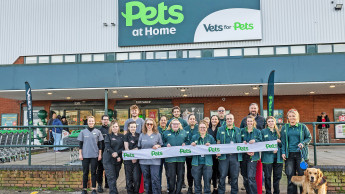

The reptile and amphibian segment is still in its infancy in the Scandinavian pet sector. Insiders in the sector say the segment is lagging 5-10 years behind other European countries
Sweden, Finland and Denmark – in that order – are regarded as the Scandinavian countries in which the reptile and amphibian segment is developing most satisfactorily. Although progress is slow, it is steady and ongoing, as reported for example by Zoo Med, the US manufacturer of terrarium products and accessories. In other parts of Scandinavia, however, the trade has made only limited advances. This is especially true of Norway and Estonia, where the import and trading of reptiles are still subject to statutory bans such as those that existed in Sweden. Nevertheless, according to a study by Euromonitor International there are around 1.1 mio reptiles in Norway (see graph), most of them originating from captive breeding or the black market, according to comments made by one wholesaler to PET in Europe.“Compared with the German or British market, the Scandinavian market is over 5 years behind in terms of development,” German manufacturer and wholesaler Jürgen Hoch told PET in Europe. Hoch said that new products are often on the market for years before wholesalers put in an order. At the recent Interzoo, Scandinavian pet product dealers told some wholesalers and manufacturers of reptile products that they were interested in focusing more on the reptile and amphibian segment, but said they could not obtain a reliable supply of such products from their respective wholesalers.Up to now, says Rik van Tiggel of Zoo Med Europe, for example, the Scandinavian reptile and amphibian market has been the firm preserve of specialists and so-called “reptile freaks”, who often have the right scientific background to turn their hobby into a business. This mirrors the situation that existed in Germany and England until about five years ago. Many hobbyists also breed from their pets and are able to supply captive-bred specimens in such numbers that they are even offered for export to Europe and foreign animal markets.It is only in the last couple of years that pet product dealers in Scandinavia have lighted upon the reptile segment as a putative source of additional income. In parallel with this, the segment has attracted wholesale companies, especially those that have dealt chiefly in aquatic products hitherto. One such company is Imazo in Sweden, which is considered to have the biggest range of reptile and amphibian products in Scandinavia. Its 28-page reptile catalogue features products from a number of suppliers including Zoo Med, Peter Hoch, Arcadia, JBL, Hagen and…
Related articles
Read also

 Menü
Menü






 11-12/2006
11-12/2006












 Newsletter
Newsletter